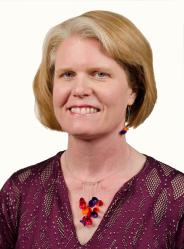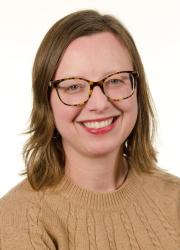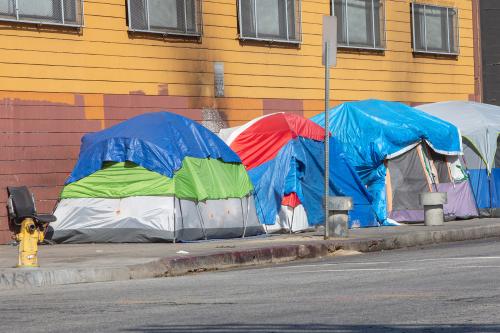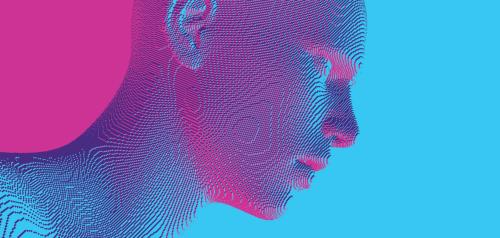Placemaking Postcards is a blog series from the Bass Center for Transformative Placemaking at Brookings where policymakers and practitioners guest-author promising placemaking efforts from across the U.S. and abroad that foster connected, vibrant, and inclusive communities. In line with the principle tenets of placemaking, the goal of the series is to recognize the community as the expert, highlight voices from the field, and to create a community of learning and practice around transformative placemaking.
Before Minneapolis became the epicenter of an international movement for racial reckoning, its residents faced the kind of everyday racial injustices that rarely make headlines. The Twin Cities metro area, for instance, has the largest racial homeownership gap in the country. While 70% of white families own their homes, only 21% of Black families can say the same. Our metro area’s racialized housing crisis has been the subject of research reports for decades, but little has changed.
To highlight the deeply rooted causes behind these disparities, in 2019, the University of Minnesota Libraries hosted the premiere of “Jim Crow of the North,” a film that tells the story of how racial covenants came to Minneapolis in the 20th century and why these racist restrictions laid the foundation for contemporary housing inequities. Filmmaker Daniel Bergin chose this location for the debut because since 2016, we had been the incubator for an experiment aimed at building political will to address racial housing inequities: Mapping Prejudice, which the film also followed the origins of. Mapping Prejudice mobilizes community members to identify racial covenants and visualize their lasting impact on the city’s physical landscape.
In this piece, we highlight how academic libraries can foster new spaces for dialogue around racial justice and housing access through community-centered projects like Mapping Prejudice, while also leveraging their resources, data, and community connections to translate this dialogue into action.
Visualizing racism in the built environment
Mapping prejudice mobilizes volunteers to visualize the hidden histories of race and privilege in the built environment. It was inspired by and builds upon similar work in Seattle and Virginia that uses digital mapping to draw linkages between past policies and contemporary racial disparities.
By engaging community members in the creation of a dataset and data visualizations of racist housing deeds, Mapping Prejudice has helped thousands of people see up close what Ibram X. Kendi calls the “racism behind those racial disparities.” Our analysis has drawn new attention not only to the lasting effects of residential racial segregation in Minneapolis, but also to how race has shaped public space in the city—with some of the city’s best parks located in residential districts that barred people of color from living there.
Over the years, these visual representations have helped residents make meaning of historical data and foster new understandings of how racial segregation was established in Minneapolis, how race shaped housing access, and how wealth is transferred from one generation to another through property ownership.

An example of a Mapping Prejudice data visualization
Source: University of Minnesota Libraries
Why academic libraries have a role to play in racial justice
Our academic colleagues as well as the broader public are often curious about why Mapping Prejudice’s institutional home is in an academic library. To us, the library makes perfect sense for a justice-oriented public history project like this because of its values and aspirations, even if the gap between these and reality can be significant and problematic. Libraries are committed to openness and collaboration, while public historians are driven to listen and co-create with the community.
Mapping Prejudice acquired its distinctive shape and place through the collaborative, integrated enactment these professional values:
- Openness and transparency. Libraries are one of our most recognizable models of truly public institutions. Academic libraries fight for the public through their advocacy and commitment to open sharing of research and data. They have developed deep expertise in provisioning free, public access to information through advocacy, infrastructure, stewardship, and a commitment to long-term preservation. For Mapping Prejudice, these principles and expertise manifest in totally open, curated, easy-to-use public data. This data is stored in the library’s open data repository, where it is carefully described and stored, and will be preserved over the long term. By tending to data with a commitment to accessibility, Mapping Prejudice also serves communities around the country who can easily use the data and build off the code and methods we designed.
- Collaboration. Librarianship and public history are both professions that center and celebrate collaboration and sharing. Some of libraries’ most fundamental and familiar services, such as shared catalog records and interlibrary loans, are rooted in decades-long commitments to work together for the greater good. Public historians are intentionally community-centered in their work, nurturing cycles of scholarship and public feedback. Driven by these principles, the Mapping Prejudice team has prioritized connecting to community members, policymakers, local businesses, and others through hundreds of presentations, workshops, interviews, and discussions. Out of these contacts, new groups have emerged, researchers have come on board as affiliated scholars, and similar project teams are being formed at universities and municipalities around the country.
- Community co-creation. Libraries provide an important venue to listen to and co-create solutions with local communities. This is where the intersection with public history is most keenly felt. Unlike traditional historical scholarship (where academics are in conversation amongst themselves), in public history, scholars and the public make meaning together. And for Mapping Prejudice’s next phase, Mapping Trust, we have outlined a strategy to build relationships with communities most negatively impacted by racially restrictive covenants.

Source: University of Minnesota Libraries
From Mapping Prejudice to Mapping Trust
Last year, we received transformational funding to usher in the next, crucial phase of Mapping Prejudice: Mapping Trust: A model for co-creative community collaboration in an academic library. With support from the Mellon Foundation, Mapping Trust will create a think tank within the library to nurture conversations—with the voices of Black, Indigenous, and people of color at the center—around dismantling structural racism and developing mutually beneficial collaborations to launch community projects with the same aim.
The Mapping Trust project involves hiring a new full-time community engagement lead and recruiting six community engagement fellows from around the Twin Cities, for work that will begin this summer. This is the first program of its kind in an academic library, although it is aligned with other movements at the University of Minnesota and beyond to bridge the gap between the academy and the surrounding community. The community engagement lead and fellows will have access to resources and support from the project team, the libraries, and the university to pursue meaningful projects with the Mapping Prejudice data for their own smaller communities.
With Mapping Trust, the hope is that the University of Minnesota Libraries can help lead a movement through which an academic library can enact its stated values of being open, serving the public good, and working for social change.





Commentary
How a Minneapolis public history project is building political will to redress racial housing disparities
May 11, 2022